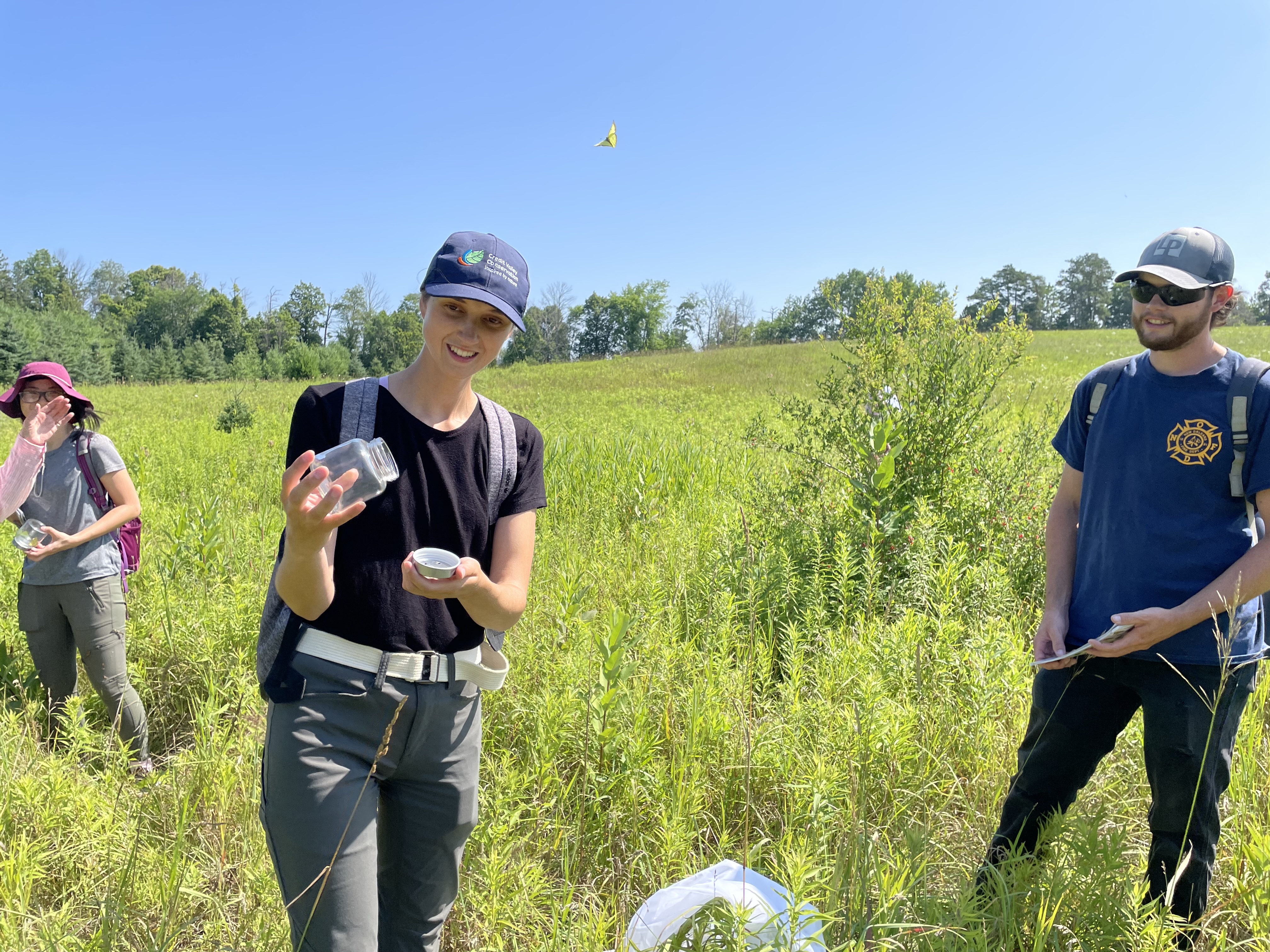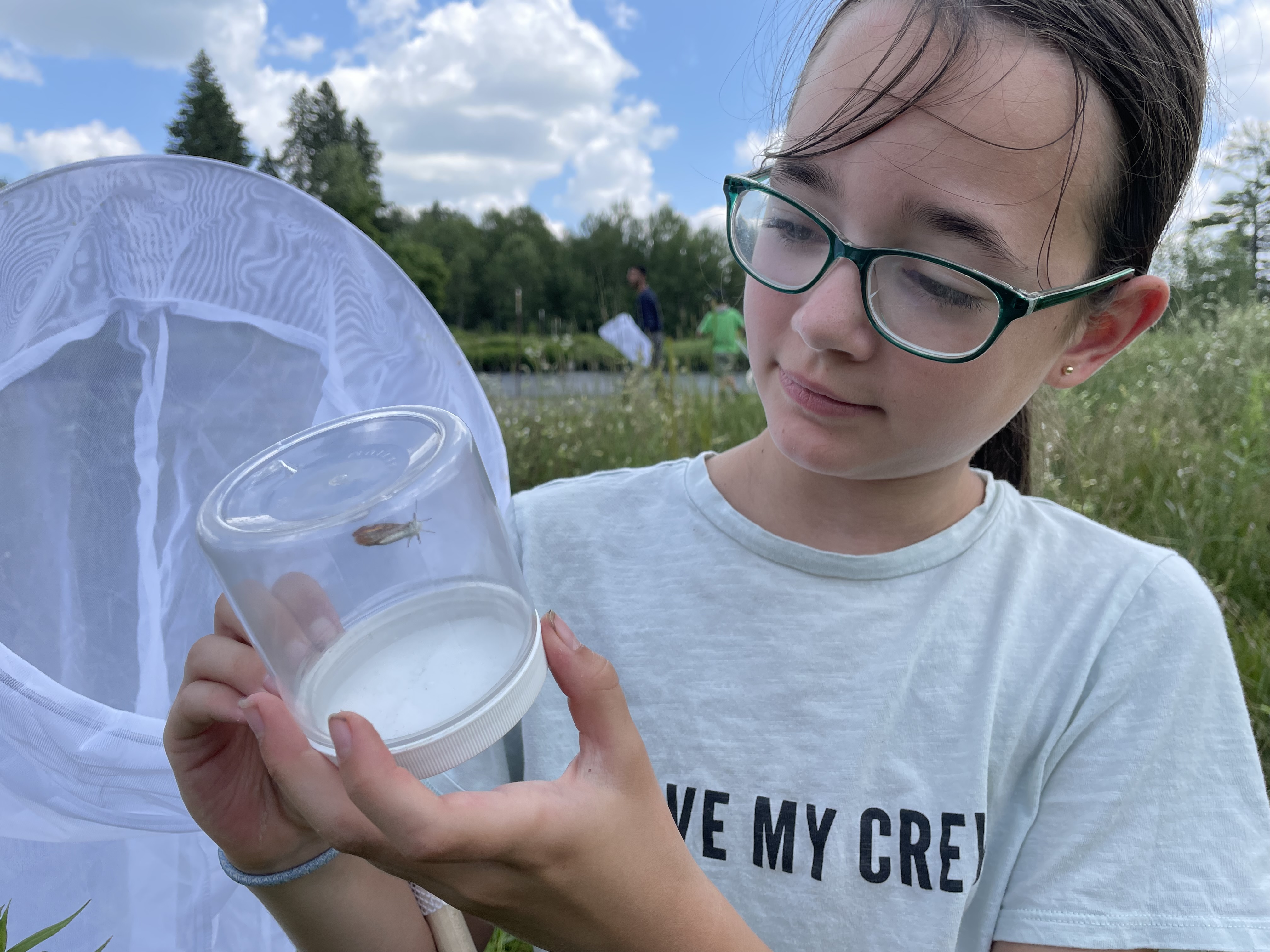Observation of the Week: September 9 – 16, 2023
For the final OOTW of the CVC Butterfly Blitz, how could we choose anything other than a photo of the most observed species made by the person with the most observations over time? You guessed it – we’ve got a Monarch seen by Julie (@sunrisegardener).
Julie has been a participant in the Butterfly Blitz since our first year in 2019, and over the five years of the project has made more than 1350 observations. Even more amazing than the sheer number of butterflies that she has observed – Julie has seen all these butterflies in her own yard.
Julie shares: “People are amazed at our numbers, with all our observations limited to our suburban property. 99% of our observations likely in the 50x50 foot front yard, with only a few in the back. Additionally impressed when we have come in first place ahead of people traveling all over the watershed. It causes people to realize that they can make a huge difference at home.”
In addition to being passionate about the difference she can make with native plants in her own yard, Julie has generously given away many plants to others who wish to add to their garden. She estimates that she has given away over 4,000 pollinator plants this year alone!
Efforts like this are truly valuable for helping support Monarchs and other native insects. Monarch butterflies are species at risk in Canada, largely because of threats to their overwintering habitat in Mexico but also because of pesticide and herbicide use.
Julie says: “Do you know, in 2019, we counted 610 Monarchs that visited our garden. Of course, during the summer, there were repeat visitors but, during migration, there were often about 30 going through a day. That was a banner year! Every year since has been hundreds less. The numbers we see give me an idea of what the numbers in Mexico will be like. I suspect, sadly, the numbers will be quite low this year.”
If you want to make a difference and support Monarchs in your area, consider following Julie’s lead and adding some native plants to your yard. Check out our website for options that may work for you: https://cvc.ca/ways-to-green-your-property/



 "
"
Images: Monarchs observed by Julie in 2019, 2020, 2021, and 2022
Monarchs are the species that Julie has observed most frequently throughout the five years of Butterfly Blitz. Julie’s not alone – over 1720 Monarchs have been observed since 2019, almost 1000 more than the next most commonly seen species.
It’s hard not to love Monarchs, with their striking colours and graceful flight. Those who joined us at the wrap up event at Terra Cotta on Saturday enjoyed watching Flight of the Butterflies (link), a movie documenting Fred Urquhart’s search to find where the Monarchs fly to each winter. A great time was had by all at the event, where we had a beautiful Monarch cake, people showing off their Monarch fashion, and even a giant stuffed Monarch caterpillar!


Images: Our beautiful celebration cake, and me with the stuffed caterpillar
Our hearts are still full after the celebration on Saturday, even though we’re all feeling a bit sad the Butterfly Blitz has come to an end. We agree with Julie, who says: “I am really sad this is the final year, I wish it continued for years and years! One of my favourite parts of summer.”
Although the official five-year Butterfly Blitz is now done, we will still have some butterfly focused community science events next year – stay tuned!
Until then, happy butterflying,
Laura and the Butterfly Blitz team

































